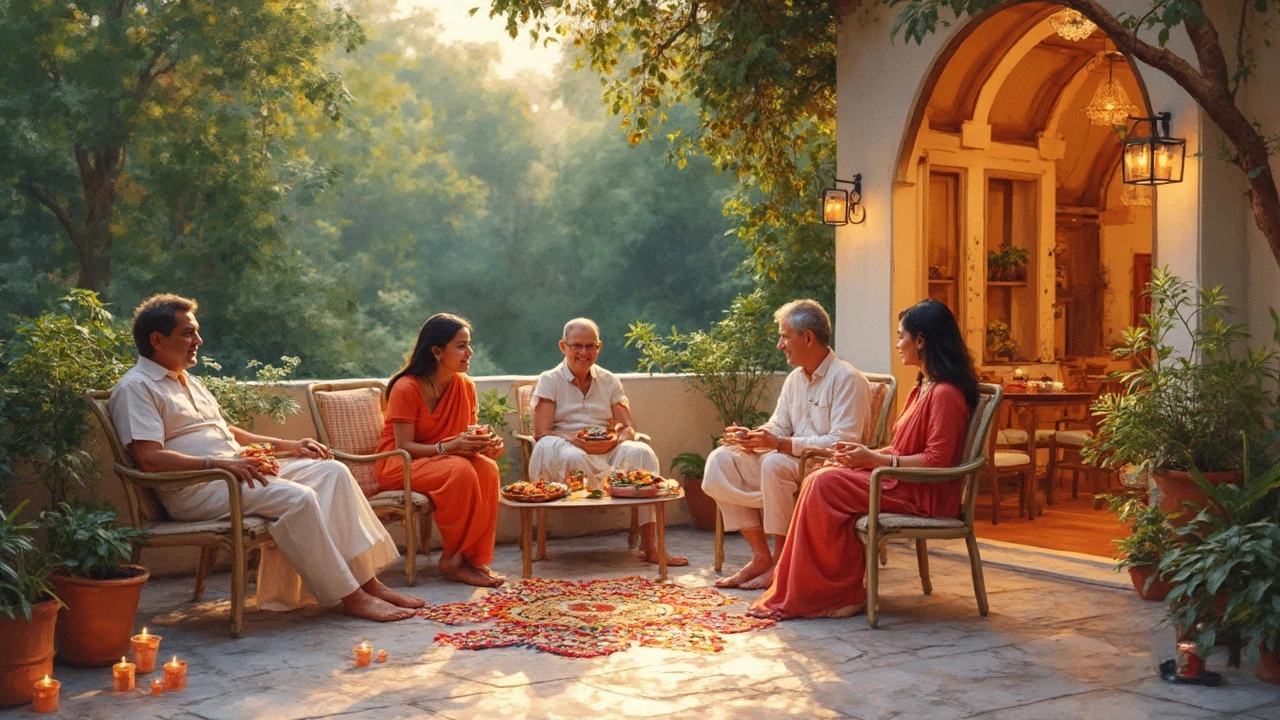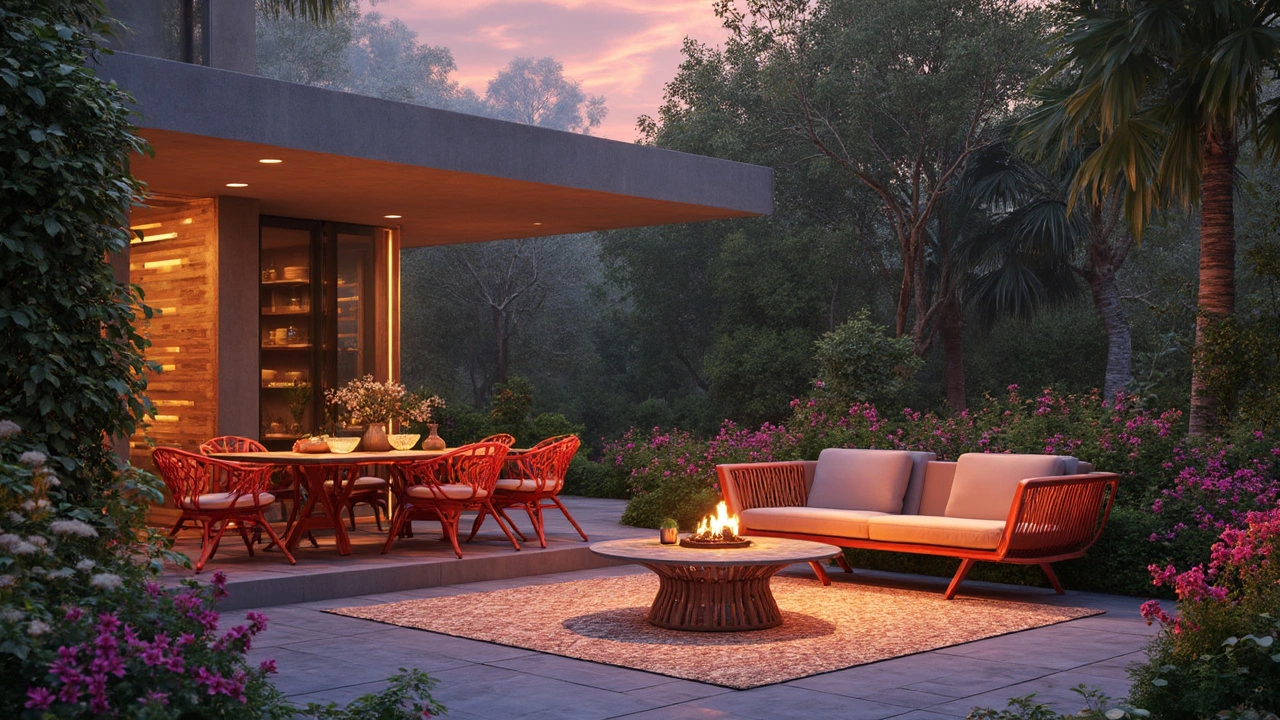When it comes to outdoor furniture, not all materials are created equal—especially when you’re thinking about maintenance. No one wants to spend their weekend scrubbing or refinishing surfaces, right? So, if easy upkeep is your goal, knowing your materials is key.
Aluminum often tops the list for low-maintenance options. It’s lightweight, rust-resistant, and doesn't demand much upkeep. Just give it a wipe-down now and then, and you’re good to go. If you’re in a region that gets a lot of rain, this could be a smart choice.
Plastic furniture is another hassle-free option. It won’t break the bank, and it’s easy to clean with just soap and water. Plus, it’s available in a variety of colors and styles, giving your garden that aesthetic appeal without the hard work.
Materials Matter
Understanding what your outdoor furniture is made of can save you a ton of time on upkeep. Some materials are practically designed for those of us who prefer less work and more leisure.
Aluminum: Lightweight and Rust-free
Aluminum is a superhero in the garden furniture world. It's not just lightweight; it's also rust-resistant, which makes it great for humid or coastal areas. Plus, it usually has a powder-coated finish that adds an extra layer of protection. A quick wash with soapy water every once in a while and you’re done.
Plastic: Affordable and Easy to Clean
Plastic is another standout for people who want easy-care garden furniture. It’s generally budget-friendly, super simple to clean, and available in a wide array of colors and designs. A simple wipe-down with a damp cloth keeps it looking fresh. However, keep in mind that it can fade in direct sunlight over time, so a little shade can help maintain its vibrant color.
Teak: The Long-term Investment
If you’re willing to invest a bit more upfront, teak is a solid choice. Unlike other woods, teak contains natural oils that make it both water and pest-resistant. While it requires occasional refinishing to maintain its golden color, many folks appreciate the weathered silver look that develops naturally. It’s like having two styles in one furniture piece.
Wicker: Style Meets Function
Wicker, especially when it's synthetic or resin, is known for being both stylish and durable. Resin wicker can withstand rain and sunlight better than its natural counterpart, making it a low-fuss option. Just make sure it has an aluminum frame to avoid rust issues, and you’ll be set.
| Material | Pros | Cons |
|---|---|---|
| Aluminum | Lightweight, rust-resistant | Potential for scratching |
| Plastic | Cheap, easy to clean | Can fade in the sun |
| Teak | Durable, attractive aging | Pricey, requires periodic oiling |
| Wicker | Stylish, durable in resin form | Natural wicker can rot |
Picking the right material based on your local weather and how much maintenance you're up for can really make a difference. Whatever you choose, there's an option out there that's perfect for your needs.
Weather Resistance
Outdoor furniture faces a lot when it's sitting outside day in and day out. That's why understanding weather resistance is crucial when picking the right pieces. Different materials handle Mother Nature's moods differently, which can seriously affect maintenance needs.
Rainy Days and Rusty Ways
Dealing with rain? You'll probably want to avoid anything that rusts easily. Stay away from untreated iron, it's a rust magnet! Instead, consider going for rust-resistant materials like aluminum or choose furniture with a powder-coated finish, which adds an extra layer of protection.
Sun and Heat: The Fade Challenge
If you're in a sun-heavy area, keep an eye on fading. Wood and plastic can lose color over time when exposed to a lot of sunlight. Polypropylene-based plastics tend to hold color better. Look for terms like “UV-resistant” when buying.
Cold Climates
In places with harsh winters, water can freeze and expand, leading to cracks. Materials like plastic and treated wicker often stand up better in cold weather. And remember, bringing cushions indoors can prevent mildew.
Quick Tip: Use Protective Finishes
Adding a sealant or finish to wooden furniture can also make it more durable against harsh weather. It's a small step that goes a long way!
Weather can be unpredictable, but if you choose the right materials that match your local climate, your outdoor furniture can last a lot longer with less fuss.

Simple Cleaning Tips
Keeping your outdoor furniture looking fresh doesn’t have to be a chore. With just a little bit of routine care, you can enjoy your garden oasis with minimal fuss. Let’s walk through some simple ways to make this happen.
Basic Cleaning Routine
Most garden furniture can be cleaned using items you already have at home. Here’s a quick routine to keep things simple:
- Mix mild dish soap with warm water in a bucket.
- Use a soft cloth or sponge to gently scrub your furniture. Be sure to get into crevices, where dirt and grime can hide.
- Rinse with a garden hose to remove any soap residue.
- Let it air dry in the sun to prevent any moisture buildup.
Dealing with Stubborn Stains
Sometimes, a little elbow grease is needed. For metals like aluminum, a paste of baking soda and water can effectively remove stains. Apply it, let it sit for 10 minutes, then rinse off. For plastic furniture, white vinegar can work wonders. Spray it on, wipe it down, and watch the magic happen.
Seasonal Deep Cleaning
Twice a year, it’s worth giving your furniture a deeper clean. This includes cushions too! Remove any fabric covers, check manufacturer instructions, and either machine wash them or wipe them down. Outdoor fabrics often come with a protective seal, so avoid harsh chemicals that might strip that away.
Quick Table of Do's and Don'ts
| Do | Don't |
|---|---|
| Use soft sponges | Use abrasive pads |
| Rinse with a hose | Pressure wash |
| Wash regularly | Wait for stains to set |
There you have it—by following these steps, maintaining your outdoor space becomes a breeze. Remember, a little attention now can save you bigger headaches later!
Protective Covers
Using protective covers for your outdoor furniture is like putting a cozy jacket on when the weather turns bad. They’re essential if you want to keep your pieces looking fresh without having to clean them constantly.
A good cover will shield your furniture from the harsh effects of rain, sun, and even dust. This simple solution can extend the lifespan of your furniture by years. Not all covers are the same, so here's a quick rundown on what you should look for:
Material Matters
When shopping for covers, pick ones made from heavy-duty, waterproof materials like polyester or vinyl. These materials won’t tear easily and are effective in keeping moisture at bay.
Fit is Important
Ensure that the cover fits snugly over your furniture. A tight fit prevents the wind from blowing it away and reduces moisture buildup. Consider covers with adjustable straps or drawstrings for a better fit.
“A cover that fits well is your furniture's best friend, protecting it from elements that can cause quick wear and tear,” says Jane Richards, editor at Garden Life Magazine.
Breathability and Vents
Choose covers with air vents to allow air circulation. This helps prevent condensation, which can lead to mold or mildew.
Here's a quick list of benefits:
- Protects against UV rays that fade colors
- Reduces cleaning frequency significantly
- Shields against rain and snow, preventing rust and corrosion
For those conscious of the aesthetics, covers come in various colors and styles, so you don’t have to sacrifice look for functionality. By investing in some good quality covers, you’ll make your garden furniture easy to maintain in the long run.

Long-term Care
Keeping your outdoor furniture looking sharp for years is all about knowing a few tricks of the trade. Even though materials like aluminum and plastic are easy to maintain, a little extra care can make them last even longer.
Basic Maintenance Tips
Treat your furniture with care—no one wants to replace pieces every few years. Start with routine cleaning. Simple things like wiping down surfaces regularly can prevent grime buildup. Use a mild soap and a soft cloth. Skip the harsh chemicals; they can damage finishes over time.
Seasonal Checks
Remember, the weather can be your furniture’s best friend or worst enemy. Depending on the material, too much sun or too much rain can be damaging. After winter or a rainy season, check for any water damage or discoloration. And during summer, keep an eye out for fading from UV exposure.
Protective Measures
If you really want to extend the life of your furniture, consider investing in some protective covers. Throw these on during extreme weather, or when you're heading off on a vacation. A little protection can go a long way in preventing wear and tear.
| Material | Average Lifespan with Care (years) |
|---|---|
| Aluminum | 10-15 |
| Plastic | 5-10 |
This table shows that, with some attention, you can really stretch the life of your furniture. Investing in easy-to-maintain options doesn't just save time—it can save money too!

